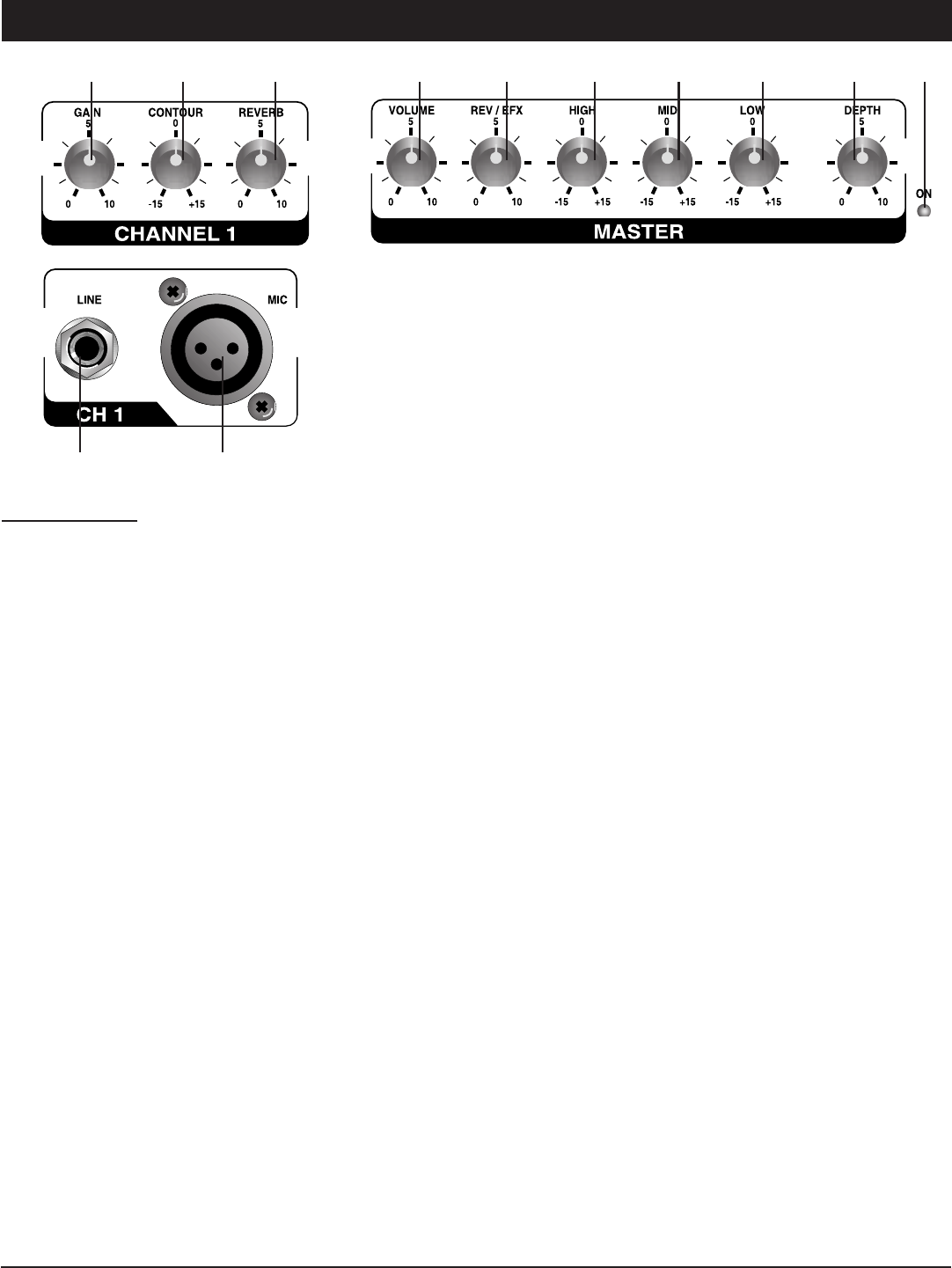
FRONT PANEL CONTROLS & CONNECTIONS
5
(1) (2) (3)
FRONT PANEL
Note: 1 through 5 below are referenced to Channel 1. The other
channels are identical.
(1) GAIN CONTROL
The Gain Control determines the proportion of the channel signal
in the mix.
(2) CONTOUR CONTROL
Adjusting this control will contour the audio, either bringing out
more highs and definition or increasing low and mid frequencies to
provide more punch.
(3) REVERB CONTROL
The Reverb Control adjusts the level of signal sent by each
channel to the internal Reverb DSP (Digital Sound Processor).
The signal sent is mono, post-Contour and will be affected by the
channel Gain Control.
(4) LINE INPUT
The Line input is designed to accept balanced or unbalanced line-
level signals such as those from keyboards, drum machines, or
samplers. Use the GAIN control (1) to adjust for the desired level.
If a balanced signal is to be connected to the line input, then a
1/4" TRS (stereo) phone plug should be wired for: Tip = positive
(+), Ring = negative (-), Sleeve = ground.
(5) MIC INPUT
The Mic input is an electronically balanced XLR type designed to
accept signals from any balanced low impedance (Low Z)
microphone. It will be necessary to adjust the channel gain with
the input GAIN control (1) to achieve a nominal operating level.
The XLR jack is configured for: Pin1 = ground, Pin2 = positive (+),
Pin3 = negative (-).
(4) (5)
(6) (7) (8) (9) (10) (11) (12)
(Note: Only either the Mic or the Line input of a given channel can
be connected at one time. Do not connect both simultaneously to
the same channel.)
(6) MASTER — VOLUME CONTROL
This controls the final level of the signal output.
(7) MASTER — REVERB CONTROL
This controls the level of the reverb effects sound.
(8) MASTER — HIGH CONTROL
The control has a shelving response giving 15dB of boost or cut at
12KHz.
(9) MASTER — MID CONTROL
The control has a shelving response giving 15dB of boost or cut at
1.5KHz.
(10) MASTER — LOW CONTROL
The control has a shelving response giving 15dB of boost or cut at
100Hz.
(11) MASTER — DEPTH CONTROL
This controls the amount of feedback of the reverb reflection, i.e.
the number of reflections and the length of time before they
diminish in volume.
(12) POWER ON LED INDICATOR
Indicates when the unit is ON.










